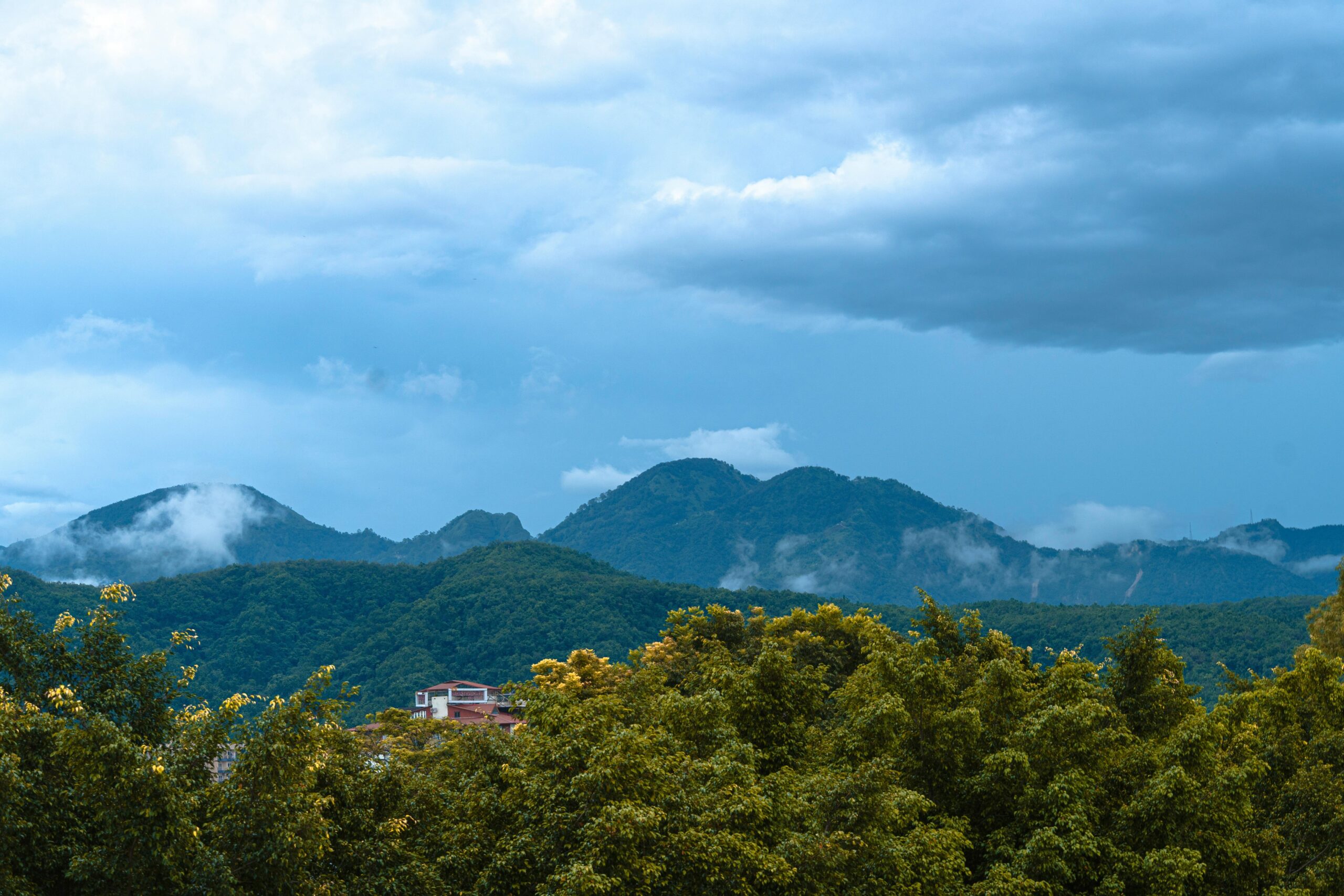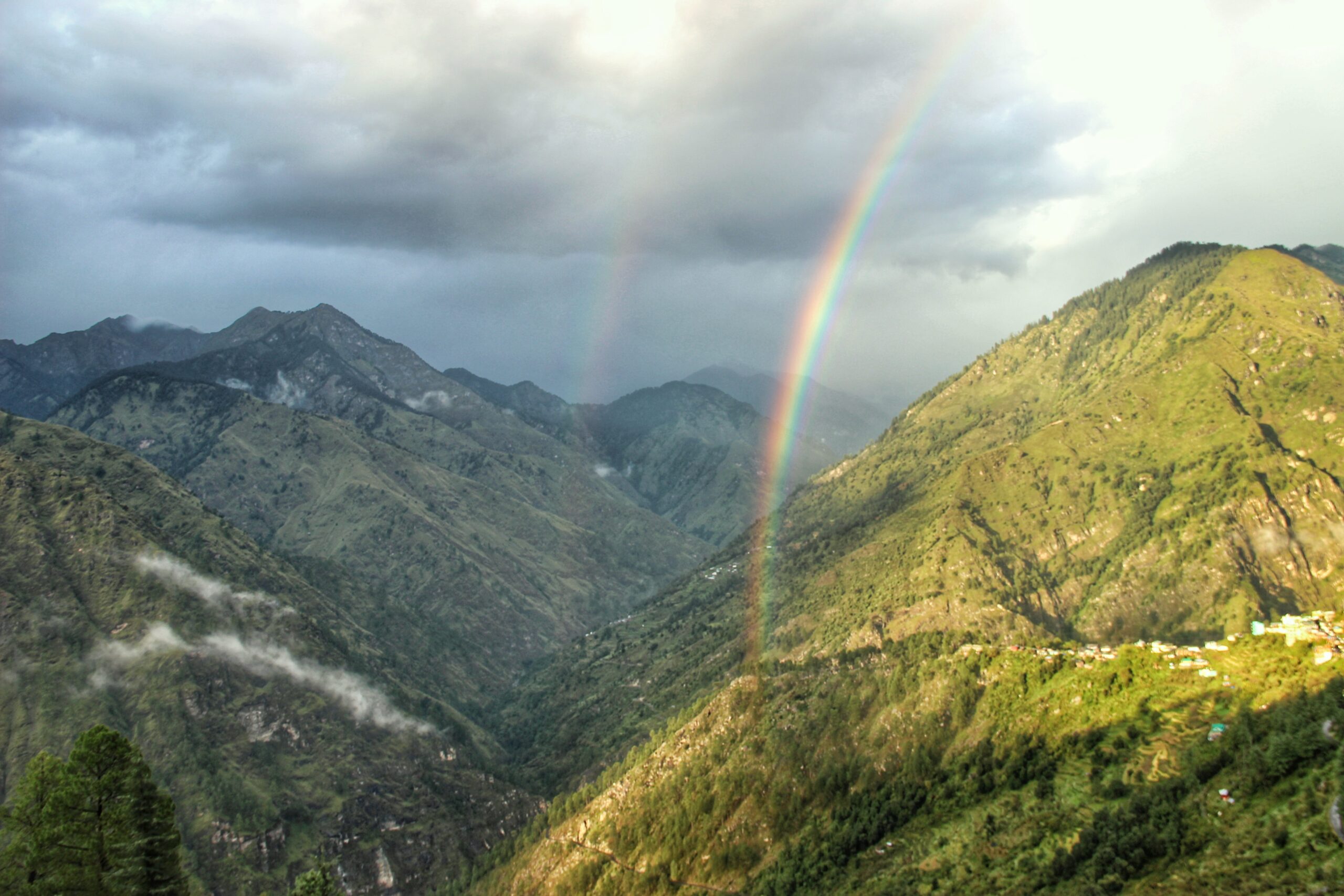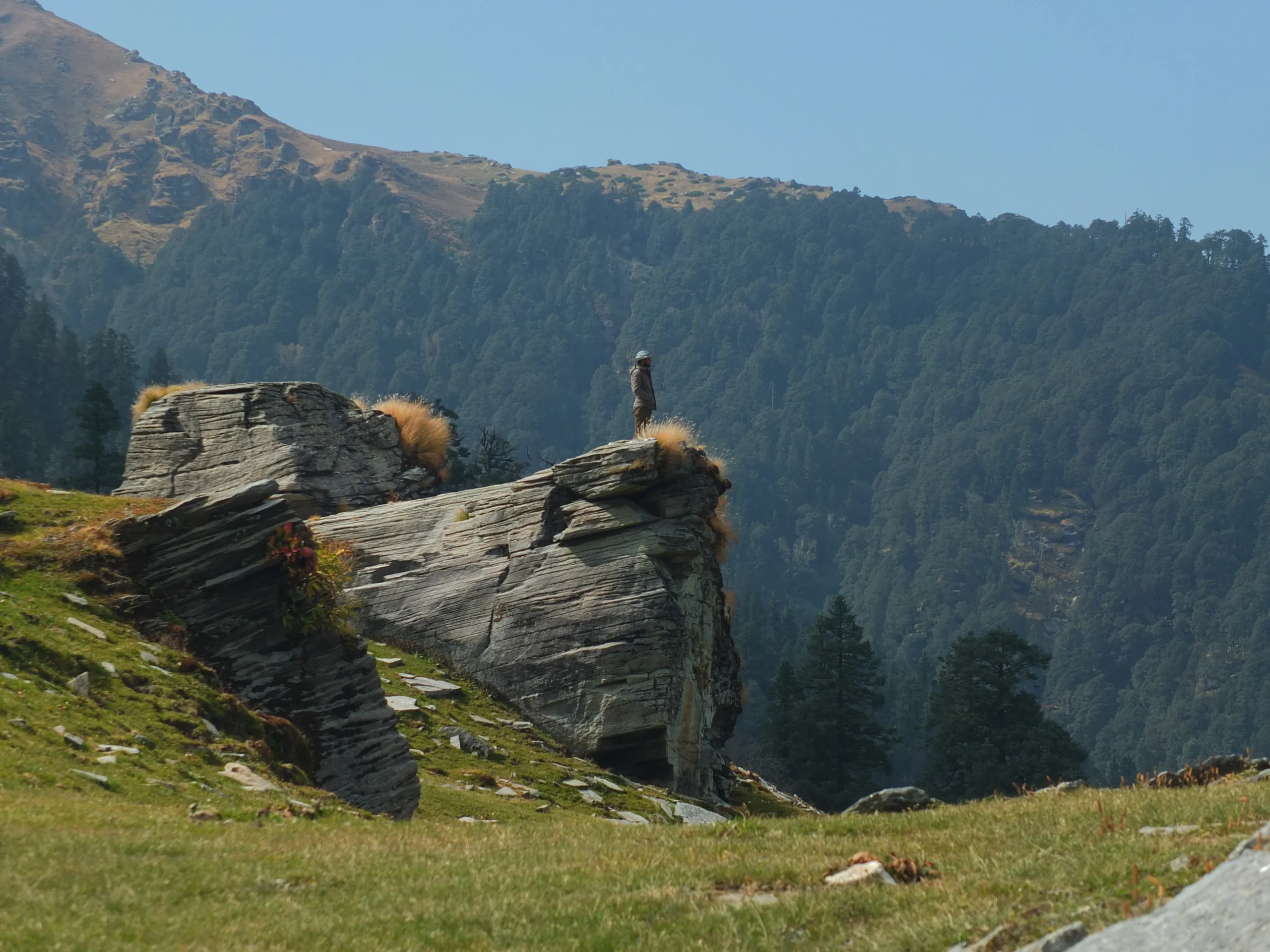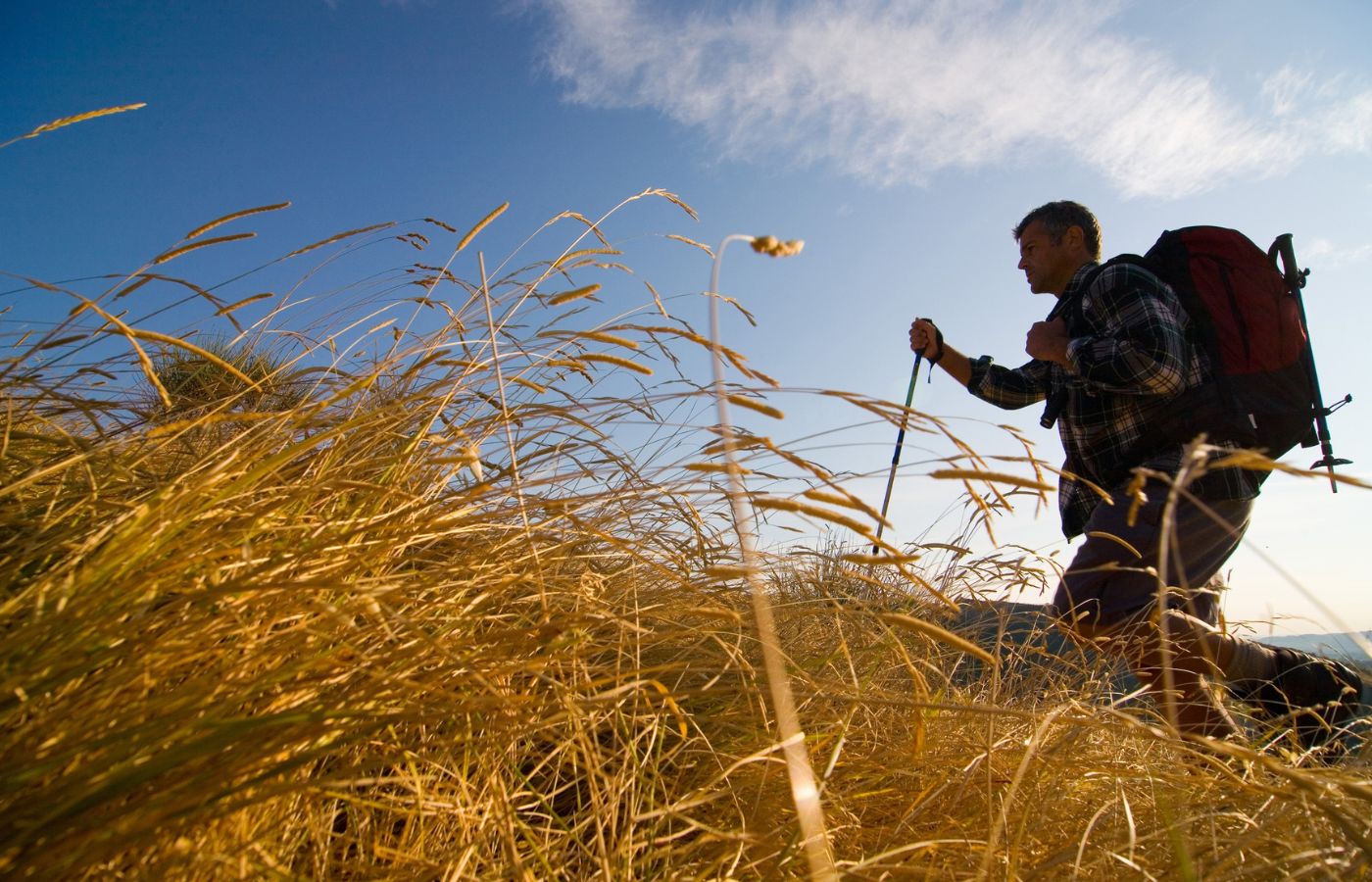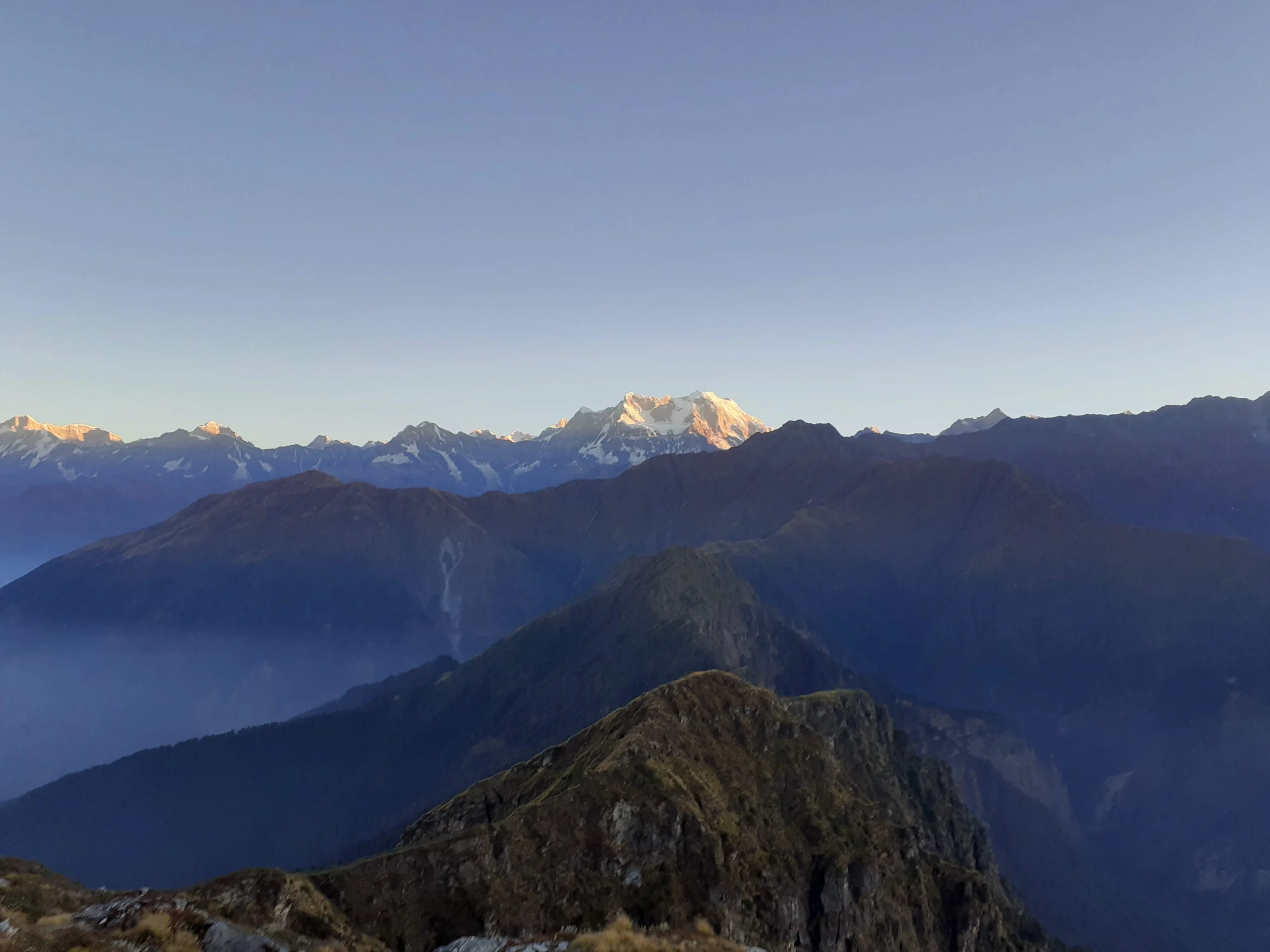One small village in Uttarakhand stands out when the Himalayas don their snowy winter shroud and most high-altitude paths become unreachable:
Chopta
Often referred to as the “Mini Switzerland of India,” Chopta becomes a snow-covered paradise between December and February, drawing trekkers, environmentalists, and spiritual searchers from all over.
Why is Chopta-Tungnath-Chandrashila so unique?
Nestled in the middle of this icy terrain, it offers an unusual mix of accessibility, amazing vistas, great biodiversity, and the mystical presence of Tungnath, the highest Shiva temple in the world.
This is a winter voyage through nature, quiet, and soul-stirring beauty, not only a hike.
The Mini Switzerland of India
Chopta, which lies in the Rudraprayag area of Uttarakhand, is a peaceful, immaculate location perched at roughly 2,680 meters. The rolling green meadows become white fields in winter; the rhododendron trees have snowy crowns; a calm silence blankets the forested slopes.
Not only the snow but also the 360-degree panoramic vistas of Himalayan giants like Nanda Devi, Chaukhamba, Trishul, and Kedar Dome that astound you from Switzerland.
The area is part of the Kedarnath Wildlife Sanctuary and includes a wide range of Himalayan flora and fauna, including musk deer, Himalayan monal, and foxes. Even in winter, this is one of the rare locations in India where temple hopping, animal viewing, and trekking coexist.
Essential Attractions in the Chopta Tungnath Circuit:
1. The Forest Trail
From Chopta to Tungnath and then toward Chandrashila, the path winds through a thick forest of oak, deodar, and rhododendron trees. In winter, the woodland is immaculately white and shockingly quiet; in April, however, it blooms in tones of pink and scarlet.
One of the most easily accessible and picturesque snow treks in India, this path is included in the Chopta winter trip.
If you’re lucky, you might find a Himalayan monal, the state bird of Uttarakhand, with its vivid blue-green feathers striking out against the snow. Moving on, this forest trail is special for first-time hikers and others because it is slow and non-threatening.
It provides a pleasant starting point for Himalayan hiking, with mild hills and well-kept trails.
2. Tungnath Temple
- Altitude: 3680 meters
- Trek distance: 3.5 kilometers from Chopta
- Spiritual significance: One of the Panch Kedars, where the arms of Lord Shiva emerged
The Tungnath Temple is steadfast even under heavy snow. It is a striking stone construction with bells and silence that radiate old vitality. Visiting the highest Shiva temple in the world in winter is a wonderful experience.
The temple’s inner sanctum stays closed during heavy snowfall, but the trip turns spiritual. The peaceful, snow-covered shrine surrounded by unspoiled mountains seems like something out of a divine vision.
Most guests say the greatest window to see this holy location in its most bizarre state is the Tungnath snowstorm season (December to February).
Standing at the temple steps surrounded by white quiet is remarkable, regardless of your beliefs or just search for peace and beauty.
In case you are wondering how to reach the Tungnath Temple, well, here are a few routes you must know.
If you’re traveling via Rudraprayag, you’ll soon be on the Kedarnath Road, crossing Tilwara, Agastmuni, and Ukhimath, and then climbing up to Chopta from there. On this route, you’ll begin climbing from the Southwestern side of the mountain. The distance from Rudraprayag to Chopta by road is approximately 65 kilometers, which could take up to 2 hours and 30 minutes, depending on the traffic and season.
- On and off season: April through November is the busiest time of year to visit Tungnath Temple. The off-season is winter, from December to March, when the area is inaccessible due to severe snowfall.
- Ideal time to visit: April through June and September through November are usually the perfect months to visit Tungnath Temple. The temple’s environs are lush and lovely during these months, and the weather is nice, with bright skies.
- Peak pilgrimage season: The summer months of May and June, as well as the post-monsoon months of September and October, are the busiest times for pilgrims to visit Tungnath Temple.
3. Chandrashila Summit
- Altitude: 4000 meters
- Trek Distance: 1.5 kilometers past Tungnath
- Difficulty: Moderate, contingent on snow depth.
From Tungnath to Chandrashila, the last stage of the trek is both the most demanding and gratifying. It calls for often negotiating treacherous patches and climbing high snow-covered trails, but from the summit, the view?
Legend goes that after killing Ravana, Lord Rama meditated here.
From Chandrashila, you can see the Himalayan range in a 360-degree panorama, including Chaukhamba, Nanda Devi, Bandarpunch, and Kedar Dome. In winter, the scene is a perfect white ocean of continuous, breathtakingly beautiful ridgelines.
The Chandrashila trek difficulty ranges from easy in spring to moderate-difficult in deep winter, depending on the snow and climate. Still, it’s doable with appropriate clothing and planning, even for fit beginners.
Because of its breathtaking vistas and holy past, this summit is sometimes praised as one of the best winter treks India.
4. Deoria Tal Lake
Deoriatal is commonly grouped with the Chopta-Tungnath circuit, and rightfully so, even if it is not part of the direct Chopta path.
- Altitude: 2048 meters
- Trek Distance: 2.3km from Sari village
- Trail type: Easy, well-marked forest trail
The Deoriatal winter trek is even more magical. The lake regularly stays half-frozen, making it a photographer’s dream come true. On clear days, the snow-covered Chaukhamba peak reflects precisely in its quiet waters. The serenity around the lake, disturbed only by whistling trees and crunching snow, brings deep tranquility.
Snowfall is regular in January and February, and pine trees line the white trail like protectors of the forest.
Here, you can choose to stay overnight in campers or forest rest homes to see the sunrise over the lake—a fantastic, golden moment in the winter solitude.
Ideal Time
Chopta is open all year round, but winter changes it totally:
| Month | Conditions | Highlights |
| December | Fresh snowfall begins | Crisp air, festive mood, early snow blanket |
| January | Peak snowfall | Ideal for snow trekking, clear sky views |
| February | Snow begins to recede slowly | Better trail access, fewer crowds |
| March-April | Spring transition, melting snow | Rhododendron blooms, warmer days |
While December to February is the ideal Tungnath snowfall time, the March–April window provides the best of both worlds — lingering snow and flowering trees.
Pro Tip: Before making plans, check the current weather. If you are hiking following a snowfall, carry crampons or snow spikes.
Who Among Us Can Do It? (Accessibility and Physical Fitness)
Chopta Tungnath’s mild gradient is one of the leading reasons it is perfect for winter travel.
You should know as follows:
- Trek difficulty: moderate to easy
- Perfect for beginners, families, lone adventurers, and photographers.
- Basic fitness level: able to easily walk five to six kilometers
- Acclimatization is not a serious concern since heights are less than 4,000 m.
- Trail type: Well-marked, slow ascends with sporadic steep sections close to Chandrashila
Still, planning is vital. Walking in the winter calls for:
- Layered attire
- Waterproof trekking boots
- Walking poles
- Sunscreen and sunglasses
- Water
These make the Chopta winter trek feasible even for first-time Himalayan walkers.
Local Hostility and Sustainability in Healthcare
The Chopta area is charming in part because it is not overly commercialized.
If you’re stationing yourself or your group at Sari, the base camp for the Deoriatal trek, you’ll stumble across several homestays. Here, you’ll experience the local culture, the warmth offered by the people of the Sari village, and the slow life of the Himalayas.
In a way, you would support nearby businesses and aid in environmental balance preservation.
Steer clear of plastic; carry reusable water bottles; follow temple procedures.
Remember: You are traversing holy ground.
A Winter Tale to Cherish
Chopta, Tungnath in winter provides something unique if you’re seeking a break from busy hill stations, bustling towns, or even the turmoil within – solitude, snow, and soul.
Where else might you see the highest Shiva temple in two days, stroll across a snowy forest, and top a peak with panoramic views?
The trail asks little but for your presence. Long after the snow melts, it returns to pure air, spiritual enlightenment, and Himalayan memories.


